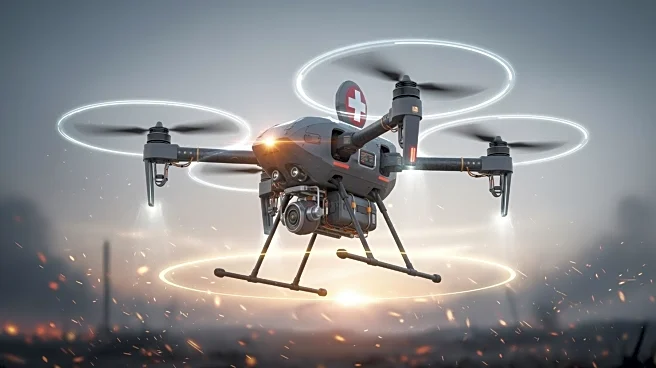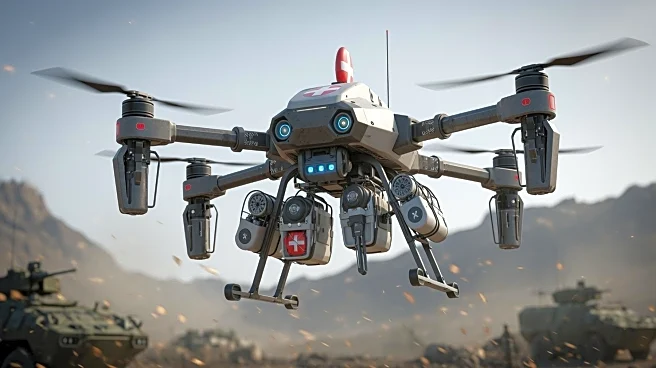What's Happening?
DARPA has issued a request for information (RFI) to identify technologies that can revolutionize combat casualty care. The agency aims to increase survivability and reduce complications from wounds that cause internal bleeding, compromise airways, and trigger
multi-organ shock. DARPA is interested in technologies that aid decision-making and intervention in the field, including sensing and imaging, AI, robotic intervention, and biomarkers for real-time monitoring. The RFI also seeks information on systems integration, human-machine teaming, and autonomous resuscitation.
Why It's Important?
Innovative technologies have the potential to significantly improve combat casualty care, enhancing survivability and reducing complications in challenging environments. By leveraging AI, robotics, and advanced sensing technologies, DARPA aims to develop solutions that can rapidly diagnose and treat life-threatening conditions. These advancements may also benefit civilian healthcare, providing new tools for emergency response and critical care.
What's Next?
Responses to the RFI are due by December 3, with the possibility of demonstration projects and technology pilots. DARPA may continue to explore partnerships and collaborations to develop and implement the identified technologies, driving innovation in combat casualty care.
Beyond the Headlines
The focus on advanced technologies for combat casualty care highlights the importance of innovation in military medicine. By developing new solutions for battlefield injuries, DARPA aims to enhance the effectiveness of medical systems and improve outcomes for service members.














